
views
Readying the Tree
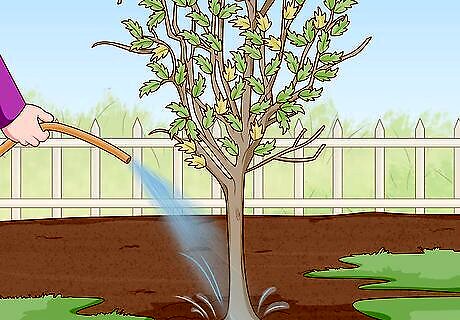
Evaluate whether the tree is healthy enough to move. If your tree is unhealthy, it's more likely to die from shock while being replanted. If your tree is dehydrated or diseased, try to treat its ailment as much as possible before moving it. Trees older than 3 years are more likely to suffer damage while being transplanted. Amateur gardeners should not attempt to transplant trees with a trunk diameter larger than 2 inches (5.1 cm). Large trees should be replanted by a landscape contractor or nursery professional.
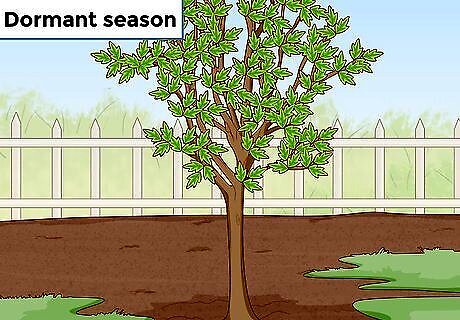
Wait until the tree's dormant season to replant it. The best time to replant a tree is in late fall or winter, when the tree is dormant and less likely to experience trauma. If your tree is healthy and does not immediately need replanting, keep it in its original location until its dormant season.
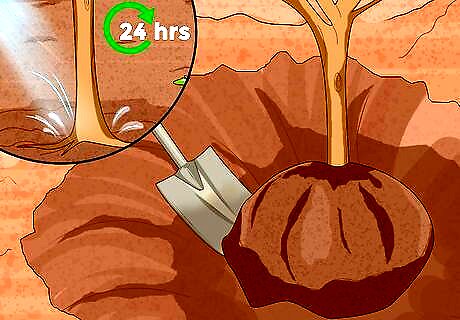
Remove the tree from the ground. Using a shovel, remove the topsoil surrounding the roots nearest to the tree's base. These roots will form the tree's root ball, and you will transplant it with the tree trunk. Dig underneath the root ball and pull the tree up and out of the ground. Dig up 10–12 inches (25–30 cm) of root ball for every 1 inch (2.5 cm) of the tree's trunk diameter. Water the soil 24 hours before you remove the tree to make digging it out easier.

Wrap the tree's root ball in burlap. Using a small shovel, dig away all soil clumps from the root ball. Wrap the entire ball in untreated natural burlap, and stitch it tightly around the tree with an upholstery needle and untreated natural twine.

Keep the root ball intact while you move the tree. As you transport the tree to its new location, grab it by the base of the trunk. Grip it above the root ball to prevent breaking the roots. If the tree is too heavy for you to carry, put it in a cart or wheelbarrow.
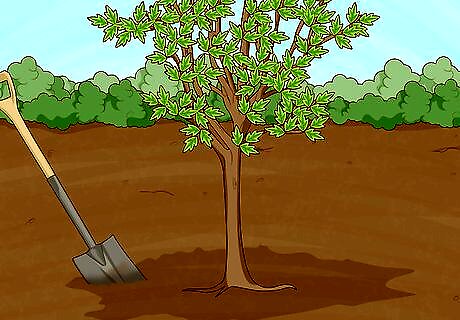
Replant the tree immediately after removing it. If possible, replant the tree the same day that you removed it from the ground. Your tree is less likely to sustain shock and reject its new climate if you put it back into the soil immediately. Don't wait any longer than several days to a week to replant your tree.
Positioning the Tree

Make sure the new location suits your tree's needs. If your tree was thriving in its old location, you should choose a place with the same soil type, weather conditions, and shade levels as the last hole. Research what conditions your tree does best in if you are removing the tree to improve its health.
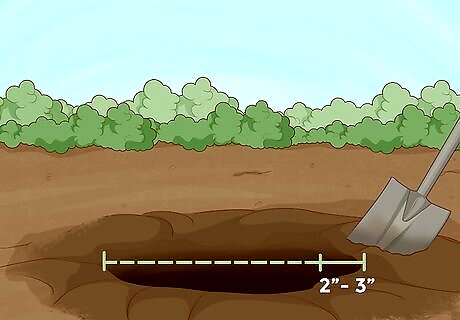
Dig a hole approximately the same depth as the tree's old hole. If the hole is too deep, water is more likely to pool in the hole when you water your tree and cause root rot. You should dig the hole, however, about 2–3 inches (5.1–7.6 cm) wider than the original hole so you can add more mulch and topsoil. Call your utility companies before you dig and ask them to mark their lines to avoid hitting a gas, electrical, or water line.
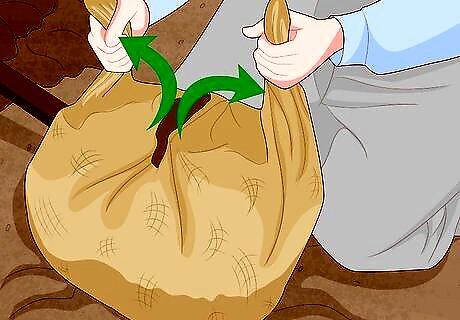
Remove the burlap wrapping from the root ball. Plating your tree with the burlap wrapping intact can restrict oxygen to the roots. This, in turn, can cause girdling which will eventually kill the tree. To avoid this, completely remove the burlap wrapping before replanting your tree in the new hole.
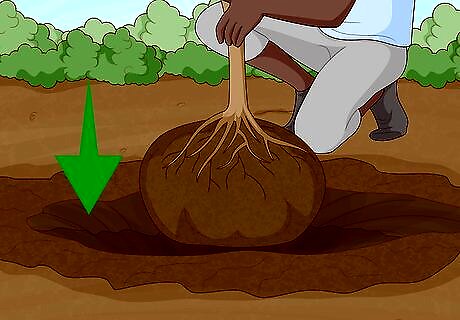
Place the tree carefully into the hole. To avoid damaging the tree, do not drop it into the hole. Replanting is often traumatic for trees, and they need to be positioned gently into the hole. Lower it into the hole and adjust it so the trunk stays upright.

Use your shovel to make sure the ground is level. Place your shovel handle on the ground and across the hole. The top of the root ball should be level with the top of the hole. If the root ball is too deep into the ground, remove it and shovel some dirt back into the hole until the root ball is level.
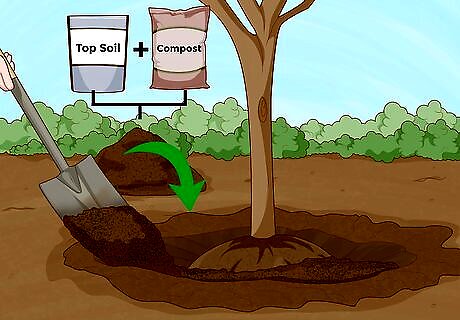
Fill the hole with topsoil. Your replanted tree will need plenty of organic matter and nutrients to adapt to its new location. Purchase topsoil, compost, or a blend of the two from a plant nursery. Shovel the topsoil in around the tree's roots until you fill the hole to the top. Ask the topsoil seller if you can see its soil makeup—a loamy topsoil with an even mixture of sand, silt, and clay is ideal for replanting trees.
Caring for a Replanted Tree
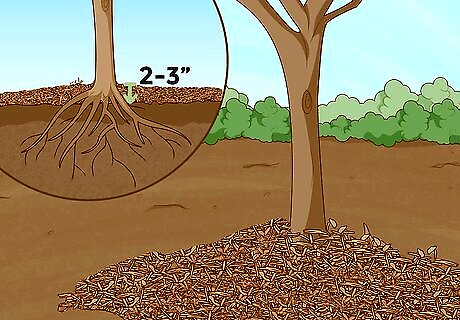
Add a 2–3 inches (5.1–7.6 cm) layer of mulch around the base of the tree. Apply the mulch in a ring a few inches (centimeters) away from the trunk. This will help the tree retain moisture and moderate soil temperature around the plant. Do not make the mulch ring any deeper than 3 inches (7.6 cm) to avoid suffocating the tree.
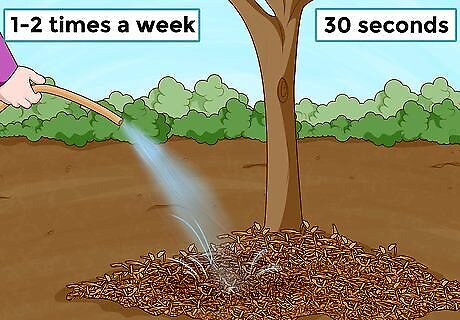
Water your tree immediately after you replant it. Once you've replanted your tree, keep the soil moist by watering it afterward. Using a garden hose with a steady stream, water the tree for about 30 seconds at a time. Continue watering your tree 1-2 times a week, each time with 30-second soakings. To avoid root rot, the tree's soil should be damp but not soggy. Water your tree twice a week during the summer or in hot climates.
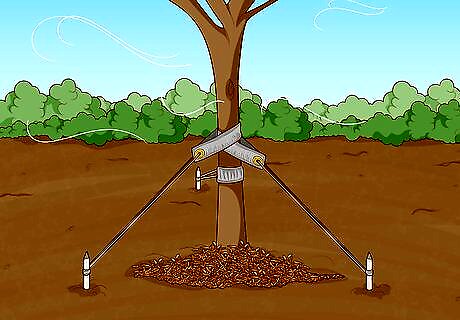
Stake your tree to the ground in windy climates. To prevent your tree from falling over while it's still taking root, stabilize it with stakes. Tie 2-3 stakes to your tree's trunk with elastic or tree straps and strike them into the ground using a hammer or mallet. Inspect the stakes regularly for damage. If the stakes appear broken, replace them.
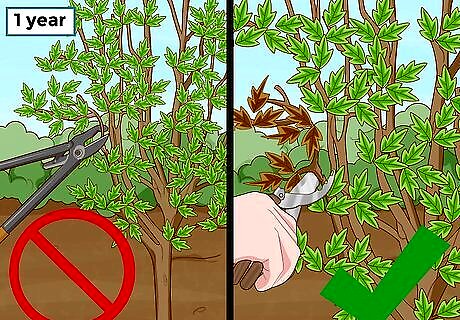
Do not significantly prune the tree for a year. After replanting the tree, prune it only to remove dead or broken branches. If you want to remove large limbs or alter the tree's shape, wait at least a year.
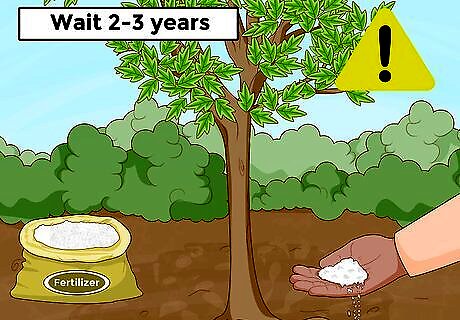
Avoid fertilizing your tree for 2-3 years. Fertilization is not recommended for newly transplanted trees because it is ineffective until your tree's roots reestablish. Wait at least 2 years before applying fertilizer—until then, stick to mulching and routine watering.














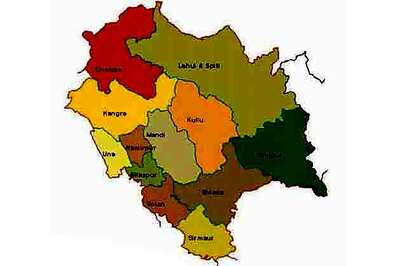





Comments
0 comment